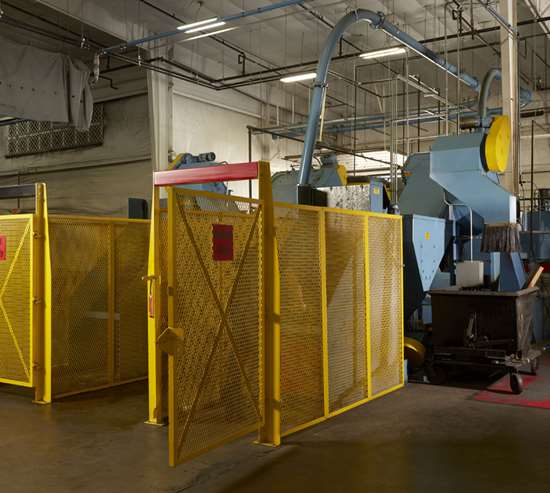Recycling System Cuts New Coolant Use in Half
Nebraska Machine Products Inc. found that using a coolant recycling system in conjunction with a chip wringer to filter and re-use water-soluble coolant helped it achieve a 50 percent savings on new coolant.
Ashop’s cost-saving strategy should not focus solely on improving a machining operation’s efficiency or increasing productivity. Savings can also be found in the often underappreciated ancillary costs. Nebraska Machine Products Inc. found that using a coolant recycling system in conjunction with a chip wringer to filter and re-use water-soluble coolant helped it achieve a 50 percent savings on new coolant.
The 50-year-old, Omaha-based company employs 70 to 90 workers and processes between 80 and 100 tons of material per month. It produces parts from aluminum, brass, plastic, carbon steel, stainless steel and super alloys for a variety of industries.
Featured Content
According to Vice President Mike Schlimgen, Nebraska Machine needed a way to recycle its coolant so it could reduce the amount of new coolant it had to buy every month. “We also wanted to cut back on disposing used coolant, because it’s better for the environment,” he says. “We have invested heavily in our recycling area, and the new technology has paid for itself in less than three years.”
Part of Nebraska Machine’s recycling technology is dedicated to machining chips. The company installed the HydroFlow coolant recycling system (CRS) from Eriez (Erie, Pennsylvania), along with a portable sump cleaner and a high-speed centrifuge that work together to continually add clean coolant to the CNC machines. In fact, all 24 of the company’s CNC machines use the water-soluble coolant now, Mr. Schlimgen says. With an emphasis on recycling, the Eriez equipment has enabled the company to cut back on purchasing new coolant. Nebraska Machine was using 24 drums (55 gallons each) of new coolant each year. Now, it has reduced that number to 12 drums per year by mixing the new coolant with the recycled coolant at a 50/50 rate, he says.
The company uses a chip wringer to process about 60,000 pounds of machining chips per week, Mr. Schlimgen says. This process recovers coolant and increases the scrap value of the chips. Dryness to less than 2 percent residual coolant is achieved in the chip recovery operation.
The residual dirty coolant is pumped to the Eriez HydroFlow CRS, which features a side-by-side 200-gallon (800-liter) dirty coolant tank and a 275-gallon (1,100-liter) lean coolant tank. A mild steel bag filter housing with No. 2 pleated bags helps filter the fluid from the chip wringer so it can be discharged into the CRS dirty tank.
The company also uses a portable Eriez HydroFlow liquid-petroleum-gas-powered sump cleaner with 175-gallon (662-liter) capacity to clean out the CNC machine tool sumps. The waste coolant is then transported to the CRS for further filtering.
The CRS works in conjunction with an Eriez high-speed centrifuge to remove both free and emulsified tramp oil to 0.5 percent or less, and particulate matter to 5 microns nominal in one pass. A coolant proportioner with concentrate drum low-level sensor is installed on the clean tank of the CRS. This is used to add clean make-up coolant to the centrifuged fluid to replace any lost coolant and to top off the machine sumps.
Tramp oils that are most damaging to metalworking fluid are those that become partially emulsified or bound to the coolant, but they are necessary for effective machine tool use. According to Mr. Schlimgen, Nebraska Machine’s CNC machines are lubricated with way oil that gets mixed with water-soluble coolant during use. The tramp oil in these machines can be managed more effectively through continuous separation, thus the need for the high-speed centrifuge, he says.
The clean coolant tank of the CRS is filled with recycled coolant as well as new, lean coolant, creating a 50/50 mix of recycled to new coolant. A 1-inch female national pipe thread (FNPT) double-diaphragm air pump mounted on the clean tank pumps the recycled coolant to the CNC machines through overhead piping. The outlet of the pump has a tee fitting with 1-inch brass ball valves on each leg. One leg is plumbed to the coolant proportioner so it can pump make-up coolant through the overhead piping.
As one final checkpoint, an Eriez HydroFlow tank-side coalesce is used to remove any free-floating tramp oils in the CRS dirty tank. This small, inexpensive unit has a flow rate of 1.5 gallons (5.6 liters) per minute, according to Eriez.
“We are trying to recycle as much as we can to minimize the waste stream,” Mr. Schlimgen says. “Through the Eriez HydroFlow system, we have seen a 50-percent reduction in fluid purchases and a decrease in disposal costs.”
For more information from Nebraska Machine Products Inc., visit nebraskamachine.com.







